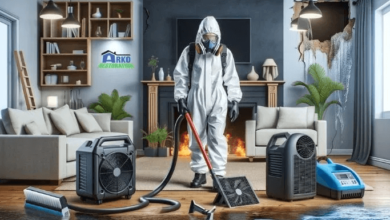The Ultimate Guide to Effective Floor Mopping Techniques

Why Proper Mopping Matters
Floors accumulate dirt, spills, and grime daily. Regular cleaning preserves their appearance and longevity. While quick wipe-downs work for surface dust, thorough mopping remains essential for deep cleaning.
Improper techniques can damage flooring or leave residue. Understanding correct methods ensures hygienic results without compromising material integrity.
Essential Preparation Steps
Sweep or Vacuum First
Loose debris turns into mud when mixed with water. Always remove dust and dirt before wet cleaning. Use a broom or vacuum for corners and edges.
High-traffic areas like kitchens require daily sweeping. This reduces abrasive particles that scratch surfaces during mopping.
See also: How to Find Investors for Your Startup and Secure Funding
Select Appropriate Tools
Mop types vary by flooring material:
- Sponge mops: Ideal for smooth vinyl
- Steam mops: Effective on ceramic tile grout
- Microfiber mops: Versatile for most sealed surfaces
Avoid ‘mop and shine’ products causing yellow buildup. Choose pH-neutral cleaners compatible with your floor’s finish.
The 7-Step Mopping Process
1. Prepare Cleaning Solutions
Use two buckets:
- Wash bucket: Hot water + detergent
- Rinse bucket: Clean hot water
Follow detergent dilution guidelines. Over-concentrated solutions leave sticky residues.
2. Dampen the Mop Correctly
Wring mops until damp, not dripping. Excess water warps wood and loosens tile adhesives. Test moisture levels by pressing on paper towels.
3. Work in Manageable Sections
Clean 5-6 sq.ft areas using systematic patterns:
- Sponge mops: Straight lines
- Rag mops: Figure-eight motions
Move backward to avoid stepping on wet floors. Re-rinse mops after each section.
4. Address Stubborn Stains
Switch to handheld scrubbing for stuck-on debris. Use non-abrasive pads to prevent surface scratches. Rinse immediately after removal.
5. Refresh Water Frequently
Replace cloudy solutions to prevent dirt redistribution. Dark gray water indicates maximum soil absorption capacity.
6. Perform Final Rinse
Remove detergent traces with clean water. Residues attract dirt and create dull films.
7. Dry Thoroughly
Air-dry floors completely before walking. Accelerate drying with squeegees or dry towels in humid environments.
Store mops upside-down to prevent mildew. Replace mop heads every 3 months.
Floor-Specific Guidelines
Hardwood & Laminate Floors
Use barely damp mops, avoid vinegar/bleach solutions and dry immediately with microfiber cloths.
Water exposure causes warping and discoloration. Never soak these surfaces.
Tile & Grout Surfaces
Steam mops disinfect porous grout lines. Scrub vertically and horizontally. Seal grout annually to prevent staining.
Vinyl Flooring
Prevent wax buildup with pH-neutral cleaners. Never use abrasive scrubbers and blot spills quickly to avoid permanent marks.
Common Mistakes to Avoid
Single-Bucket Use
Dirty rinse water redeposits grime. Always maintain separate wash/rinse buckets.
Change rinse water after every 2-3 rooms. This maintains cleaning efficiency.
Over-Wetting Floors
Excessive moisture seeps into seams and edges. It causes mold growth, structural damage, and slippery surfaces.
Infrequent Tool Replacement
Worn mop heads spread bacteria. Machine-wash microfiber heads after each use.
Maintenance Tips for Cleaner Floors
Weekly Deep Cleaning
Mop all floors weekly. High-traffic zones need 2-3 cleanings.
Spot-clean spills immediately. Delayed cleaning leads to stains and odors.
Conduct the Napkin Test
Wipe dried floors with white cloths. Light gray means clean. Dark residue indicates insufficient rinsing.
This simple check prevents recurring dirt buildup. Adjust techniques based on results.
Optimizing Your Routine
Schedule Smartly
Clean floors during low-humidity periods. Faster drying prevents watermarks.
Invest in Quality Tools
Microfiber mops outperform traditional options:
- 300% more dirt absorption
- 99% bacterial removal
- 50% faster drying
Pair with telescopic handles to reduce back strain. Ergonomic designs improve cleaning efficiency.
When Professional Help Becomes Necessary
Consider mechanical scrubbers for:
- Discolored floors from mineral deposits
- Grimy grout requiring deep extraction
- Wax buildup causing traction issues
Annual professional cleaning restores heavily soiled surfaces. It prepares floors for effective daily maintenance.
Final Recommendations
Consistency beats intensive cleaning sprints. Regular mopping with proper techniques keeps floors pristine. Adapt methods to your flooring type and traffic patterns. Monitor tool conditions and water quality for optimal results.


